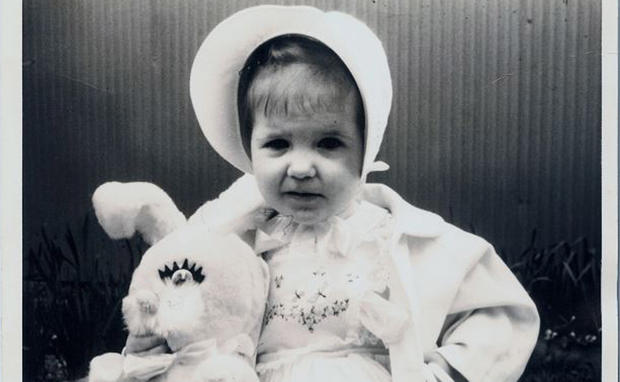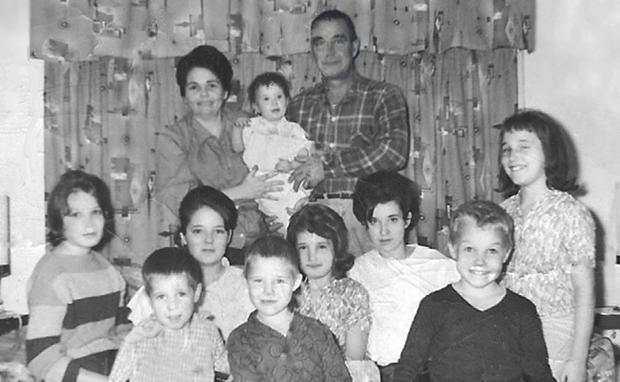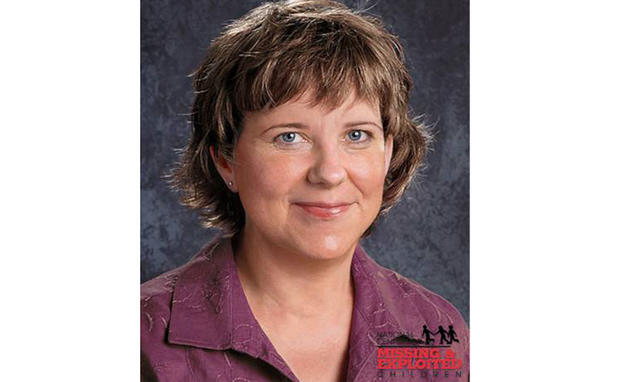Real-life "Gone Girl?" Search continues in 1965 missing case
CAPE GIRARDEAU, Mo. -- Martha Hamilton considers her sister Beth to be a real-life "gone girl."
On June 13, 1965, two-year-old Elizabeth Ann Gill, known to her family as Beth, was playing with several of her brothers and sisters in her family's yard in Cape Girardeau, Missouri. Beth was the youngest of ten children. That Sunday, Hamilton and another sister were driving home with their parents from a short trip out of town, having left Beth in the care of her older siblings.
Suddenly, Beth vanished. There's been no word from her since.
Ironically, the small Mississippi River town where Beth disappeared so many years ago is the same town where parts of "Gone Girl," a hit movie about a missing woman, was recently filmed. Though Beth is the longest-missing child registered in the state, Hamilton said her family still is affected by her unsolved disappearance nearly five decades later.
"No matter what people say, you don't heal," Hamilton told 48 Hours' Crimesider. "It's like a scar you can re-open if you're not careful."
For days after the disappearance, local police and volunteers combed the neighborhood, but turned up no trace of the toddler. Crews also dragged the nearby Mississippi River, but investigators believe the terrain between the home and the river was too rough for the child to traverse by herself, and family believed she had been missing only a matter of minutes before the frantic search began.
Family insisted Beth would have never wandered off on her own, though the child wasn't afraid of strangers.
The following day, police received a tip from a local car dealer indicating Beth may have been abducted - something Hamilton says the family never imagined could happen.
"In 1965, you didn't worry about child abductions, especially in a small, sleepy town like Cape Girardeau," said Hamilton, who still lives in the town, where she works as a realtor.
The tip would become what investigators still believe to be the most significant lead in the case.
A local car dealer told police that a couple staying at the motel directly behind the Gills' home had recently ordered and paid for a part on their 1965 Chevy truck. The dealer told the couple the part wouldn't be in until Monday, and they responded it wasn't a problem because they'd be in town for about another week.
On Monday, the day following Beth's disappearance, the dealer called the motel to let them know the part was ready and was told that they'd checked out the day before - around the time the child disappeared.
That raised investigators' suspicions, especially when they learned the family staying at the motel were transients who had been canvassing the area selling purses - and using license plates from at least three different states on their vehicles and allegedly using aliases.
"My feeling is that that was the best lead at the time, and it still continues to be the best lead," Det. Jim Smith, the lead investigator on the case for the Cape Girardeau police department, told Crimesider. "It's never been eliminated."
Years later, several witnesses would come forward, saying they had seen a woman talking to Beth in her yard a few days before she vanished, coaxing the child to come to her. At the time, investigators weren't able to locate the transients, but Beth's family was also convinced they were their best hope of finding her.
"These persons just seemed to vanish without leaving any trail the day our little girl disappeared," Beth's father Harry wrote in a 1966 letter to President Lyndon Johnson, begging him to direct the FBI to investigate. "If these persons could be found, I feel certain our little girl will be found, or at least we can learn what happened to her."
More than a year later, famed FBI director J. Edgar Hoover responded, telling Gill that his agency was precluded from investigating without evidence of an abduction, but would continue to investigate out-of-state leads at the request of local police.
"I can certainly appreciate your anxiety and concern regarding the disappearance of your little daughter Elizabeth Ann," Hoover wrote.
In 1970, Harry Gill died suddenly of a heart attack at 55. The FBI later changed its protocols regarding missing persons investigations, and eventually would become involved, along with the National Center for Missing and Exploited Children.
In 2010, the FBI reclassified the case from a missing person to a kidnapping.
That same year came a significant break, when a family friend conducting an Internet search came across a woman who might be related to one of the transients who stayed at the motel. The FBI and Det. Smith, who had been working the case since he first heard about it from a reporter in 2003, traveled to Eastern Pennsylvania to interview the woman.
According to Smith, the elderly woman was extremely reluctant to talk. The woman told investigators that two of her family members had somehow been involved in the investigation into the disappearance of a baby many years ago. She said a relative and his wife told her he had been held and questioned by police all day, because they and their vehicle had been seen in the area where the child went missing.
Smith said he can't find any record of a couple being questioned in the Gill case. He couldn't say whether the alleged questioning happened in Cape Girardeau, or whether the "baby" the woman referred to was Beth Gill.
Without evidence or more information, the woman was never charged.
"If this is the lead we're talking about, if this lady passes away or another family member passes away, that could be the end of it," Smith said. "It's very frustrating."
Smith, who has become close to the family over the years, said he has hope that Beth is still alive. DNA from the child's sister and mother have been entered into national databases that are regularly checked against unidentified human remains, and a match has never surfaced, Smith said.
He says he hopes he can find answers soon for Beth's mother Anola Gill Bowerman, who is now 87.
"It's heart-wrenching to think about - she just disappears at two years old, and no one sees or hears from her again," Smith said. "How do you live with that?"
Hamilton also believes her sister, who would now be 52, is still alive.
When her sister vanished in 1965, she said, the country was vastly different than it is today -- 24-hour national news networks, the National Center for Missing and Exploited Children, social media and Amber Alerts didn't exist. Now, Hamilton hopes to harness the Internet and the media to get the word out to Beth - wherever she may be - that her family is still looking for her.
"I have come to the conclusion that we cannot find Beth," Hamilton said. "But she might be able to find us - if we're easy to find."
The National Center for Missing and Exploited Children has developed an age-progressed image of Elizabeth Ann Gill, picturing her as she might appear today. If you have any information about the disappearance, call 1-800-THE-LOST or an anonymous tipline at 573-339-6313.




